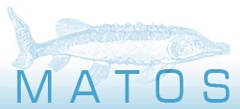How MATOS Works
New users must request a MATOS user account and agree to the user agreement. After the user account request is approved, the new user can set up a project. When setting up an initial project in the MATOS data portal, a researcher should follow the prompts on the new project page. After this form is submitted, the submitted project will be created in MATOS and the centralized interoperable database. When the researcher deploys tags (i.e., releases tagged animals), the researcher will complete the tag metadata template. Upon establishing receiver stations, the researcher will submit an instrument metadata template. In addition, r esearchers may now submit planned receiver deployments via the proposed station locations metadata template. Please follow the detailed instructions on the Submit Data page to set up an account, create a project, and/or submit data and metadata. We’re here to help! Questions? Get answers at east.coast.telemetry@gmail.com

